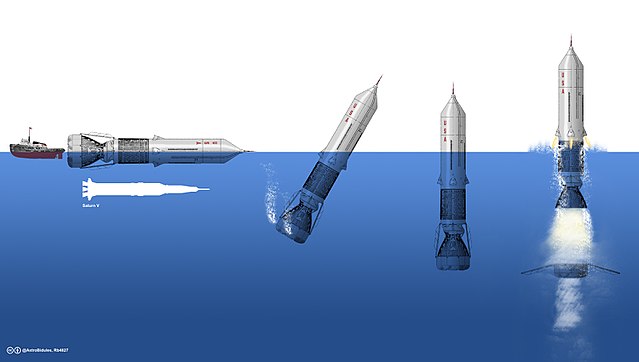Sea Dragon
The very large rocket was probably Sea dragon and the advantages were more on allowing a massive vehicle to be built at all rather than inherent advantages in starting underwater.
Building the launch vehicle on a slip way and floating it to the launch site bypasses a number of size constraints in building and moving large assemblies (possibly mythical example) on land. It also potentially allows optimal launch site selection and simple range clearance. Flooding tanks to get the vehicle upright can be simpler to organise than very large cranes or vertical integration.
Starting a rocket while submerged technically allows the vehicle to start moving upwards from the positive buoyancy, by dumping ballast getting lift for 'free'. On the other hand a vehicle starting on land doesn't need to do anything to reach sea level to start with.
Actually starting the rocket while submerged would technically get increased thrust from the ground effect, but the pressure effects and water hammer potential would be complicated to manage and notably submarine launched ballistic missiles generally cold launch, floating to the surface and only firing once clear.
The downside of submerged launch is that the rocket also needs to be strong enough to withstand positive pressures, wave motion and salt water which look to far outweigh the advantages other than the special case of firing from a submarine. It also by definition is starting at low altitude in thicker atmosphere where some minor advantages can be had launching from high ground.
